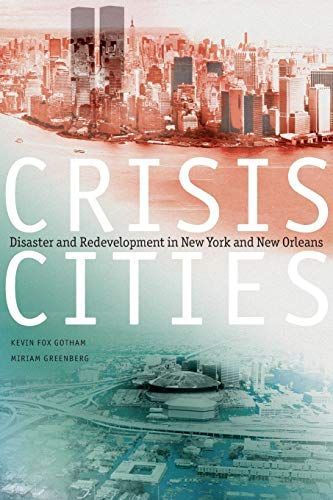
Crisis Cities Disaster and Redevelopment in New York and New Orleans
Crisis Cities blends critical theoretical insight with a historically grounded comparative study to examine the form, trajectory, and contradictions of redevelopment efforts following the 9/11 and Hurricane Katrina disasters. Based on years of research in the two cities, Gotham and Greenberg contend that New York and New Orleans have emerged as paradigmatic crisis cities, representing a free-market approach to post-disaster redevelopment that is increasingly dominant for crisis-stricken cities around the world. This approach, which Gotham and Greenberg term crisis driven urbanization, emphasizes the privatization of disaster aid and resources, the devolution of disaster recovery responsibilities to the local state, and the use of generous tax incentives to bolster revitalization. Crisis driven urbanization also involves global branding campaigns and public media events to repair a city's image for business and tourism, as well as internally-focused political campaigns and events that associate post-crisis political leaders and public-private partnerships with this revitalized urban image. By focusing on past and present conditions in New York and New Orleans, Gotham and Greenberg show how crises expose long-neglected injustices, underlying power structures, and social inequalities. In doing so, they reveal the impact of specific policy reforms, public-private actions, and socio-legal regulatory strategies on the creation and reproduction of risk and vulnerability to disasters. Crisis Cities questions the widespread narrative of resilience and reveals the uneven and contradictory effects of redevelopment activities in the two cities.